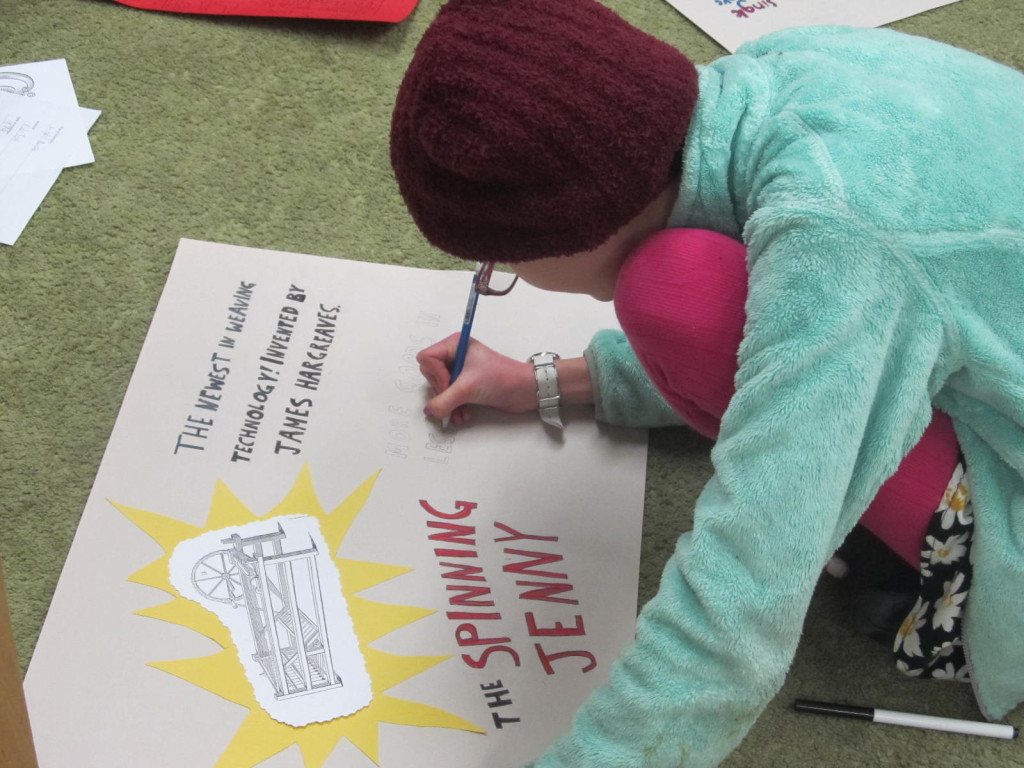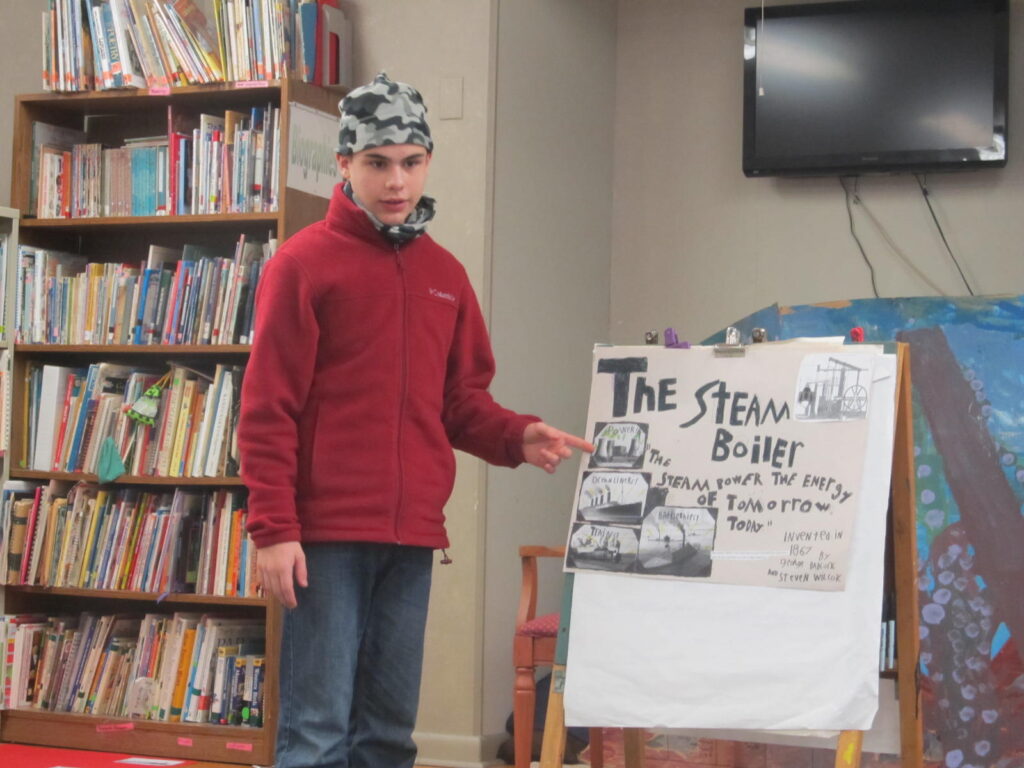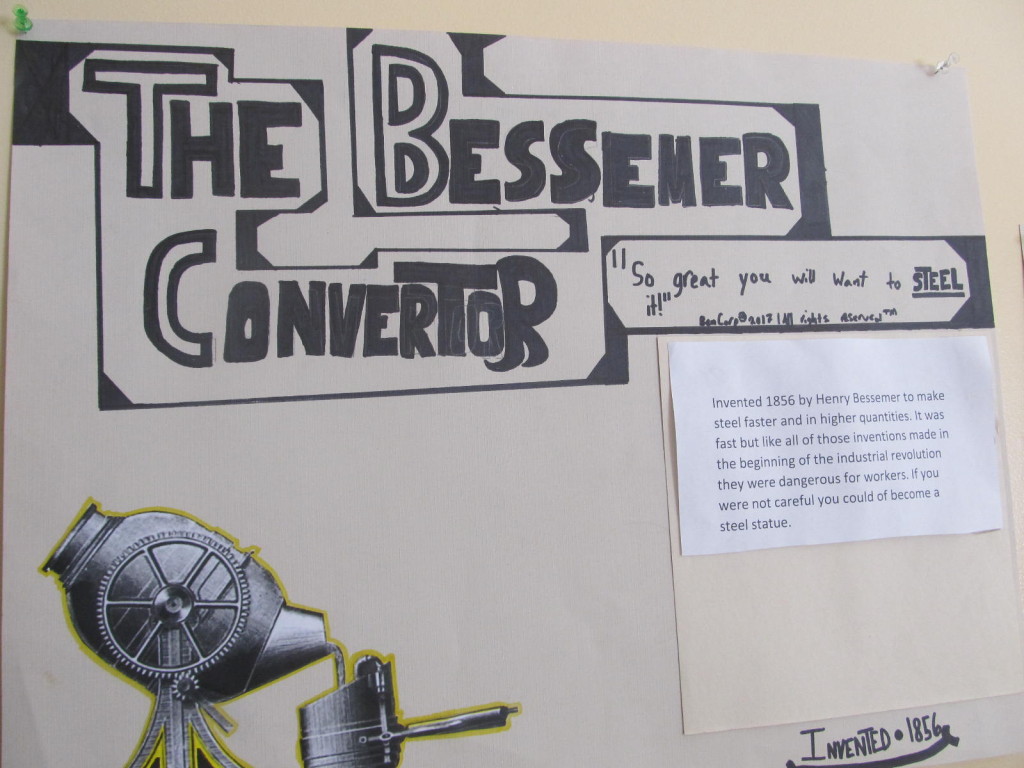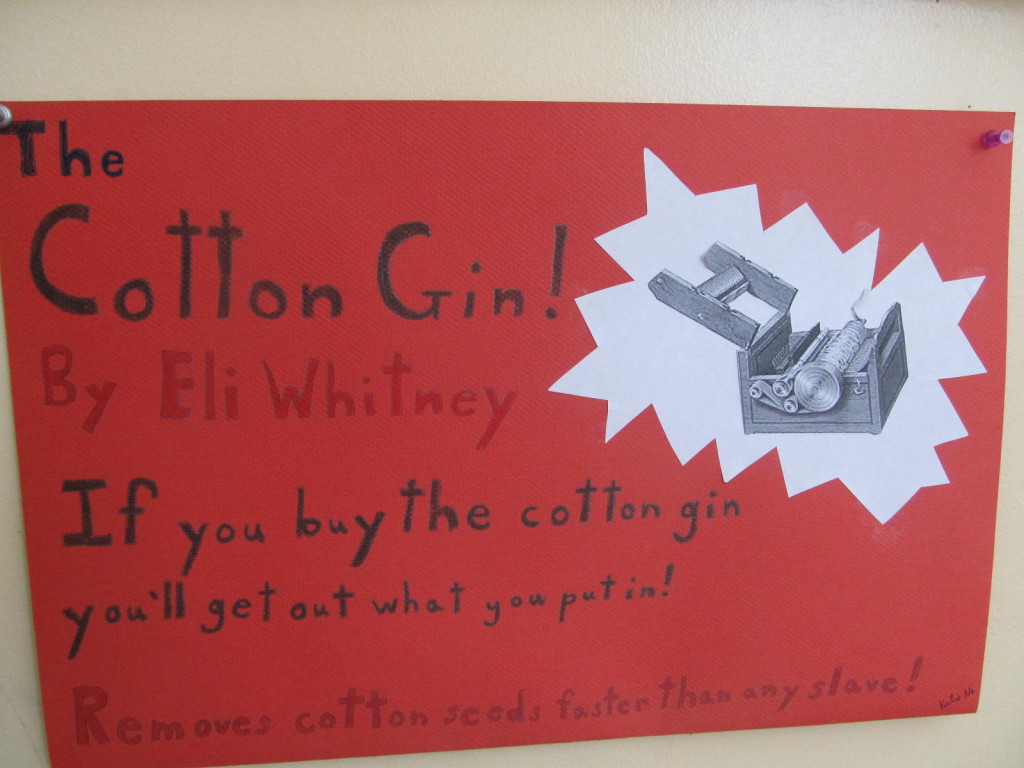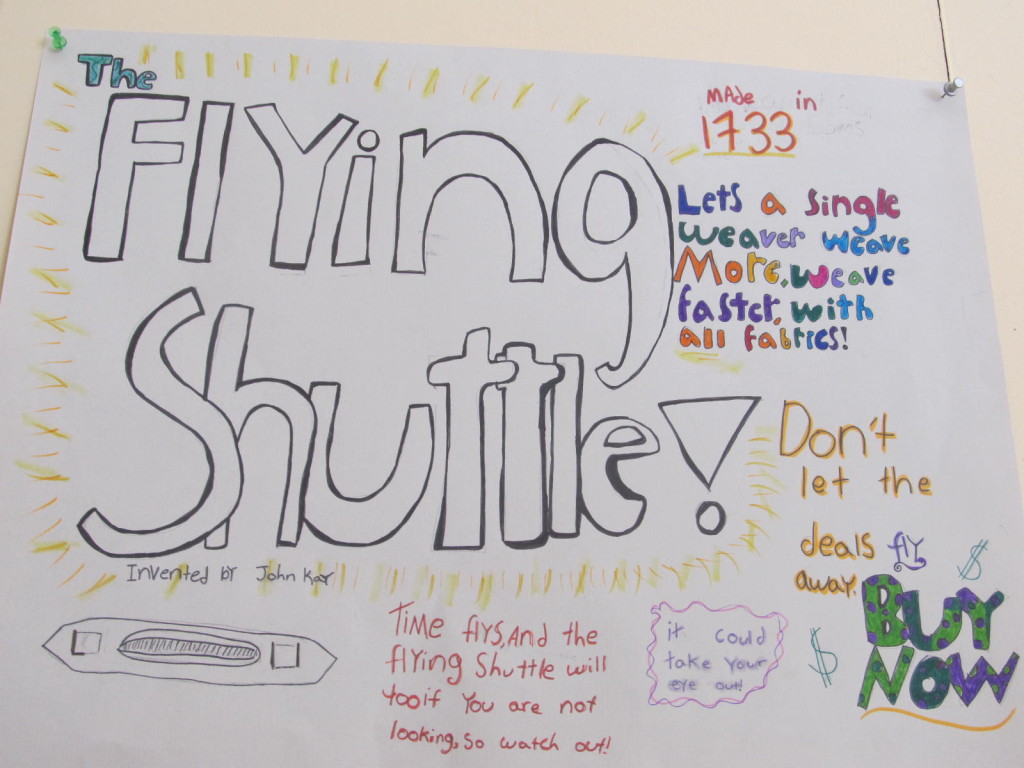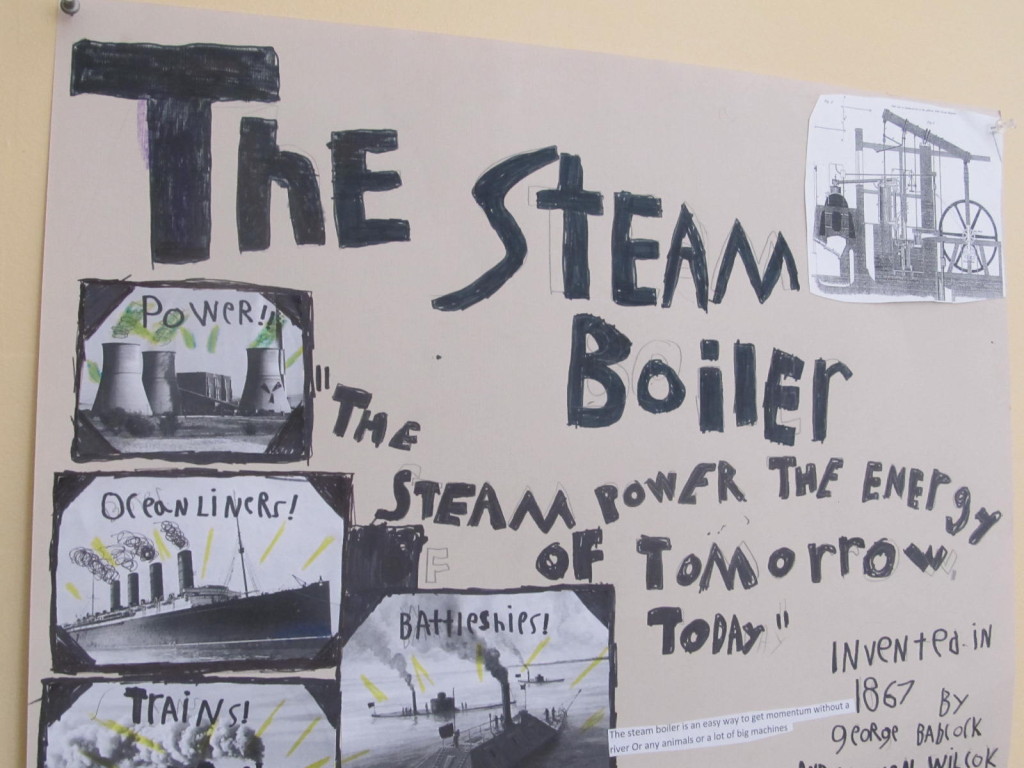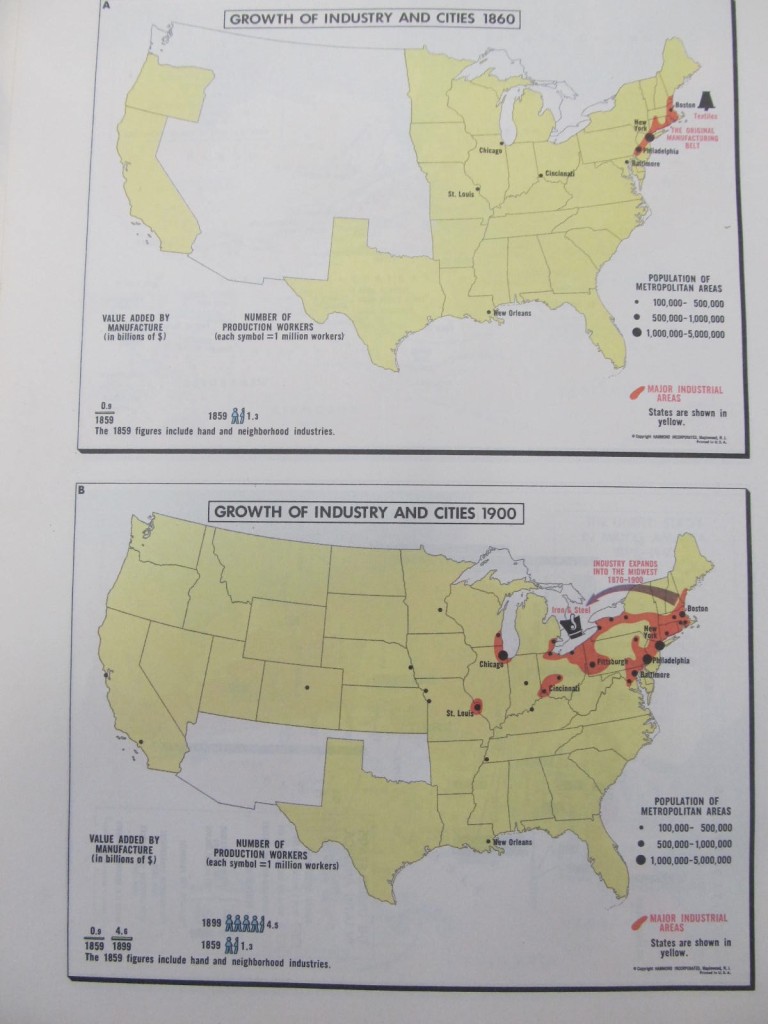Our Industrial Revolution unit focused on the causes and effects of the Industrial Revolution. First we had to compare life in an agrarian society and how it was different during the industrial society. We looked at maps from 1860, 1900 and 1920 that showed how industrial centers started to grow and move west and south. To understand why this was happening we learned more about some of the inventions of the period. Each student was assigned to research an invention, create a poster, which they in turn they presented to the class. Everyone was therefore able to discuss the effects of the invention of the Flying Shuttle, the Spinning Jenny, the Cotton Gin, the Steam Engine, the manufacture of steel, the automobile, the railroad and the light bulb. It soon became apparent that there were pros and cons associated with these inventions.
Through the photography of Lewis Hine the students learned about child labor. Students were assigned an historical novel to read that was set during this period. Again they presented their books to their classmates sharing information about the working conditions in the factories described in their novel, the attitude of the characters to child labor and the people who were change agents at that time.
Next we will be simulating an assembly line experience and discussing whether it was more efficient and/or was it more or less enjoyable than the old way of making things. Students working with a partner, will go on to research one of the famous labor disputes of the time. Ludlow Mine Strike, Homestead Steel Strike, Haymarket Riots, Pullman Strike and Lawrence Textile Strike. To support this research they will complete weekly reading assignments from Cobblestone’s Captains of Industry where they will be learning about the industrialists such as Vanderbilt, and Carnegie. For a culminating activity the students will be writing an essay on the pros and cons of the Industrial Revolution.
